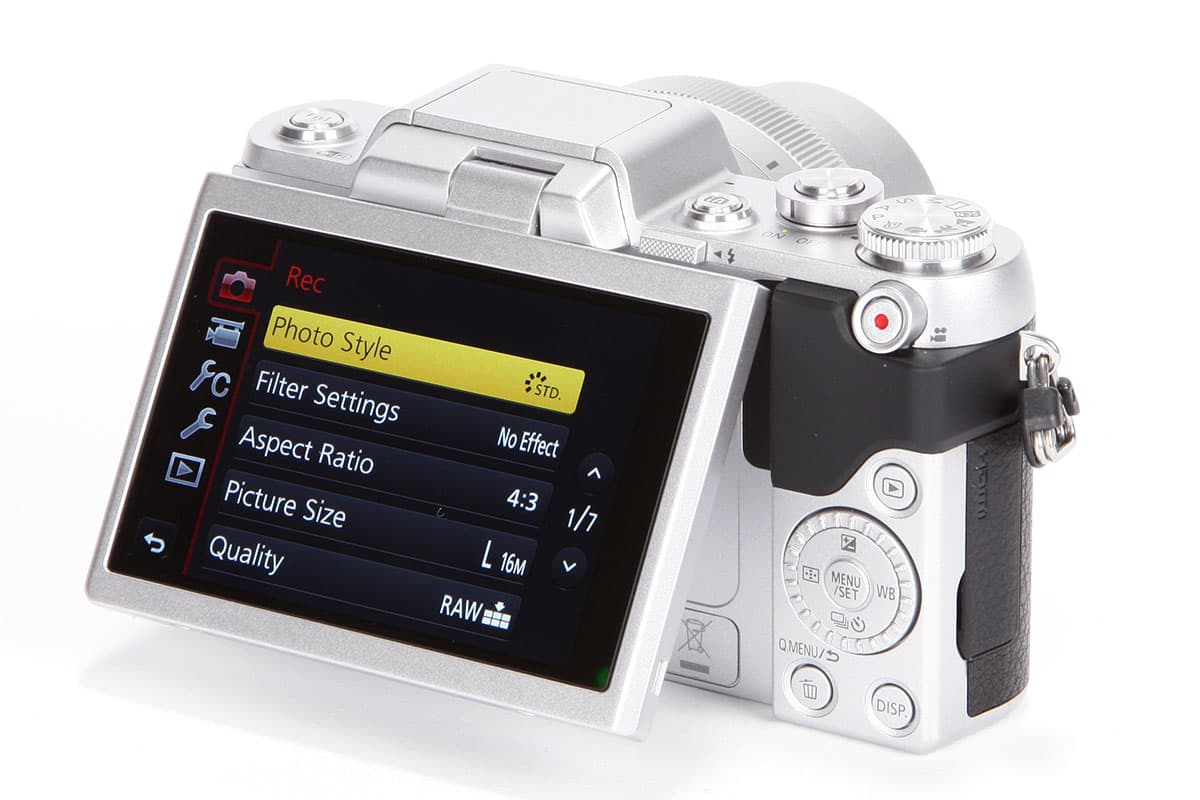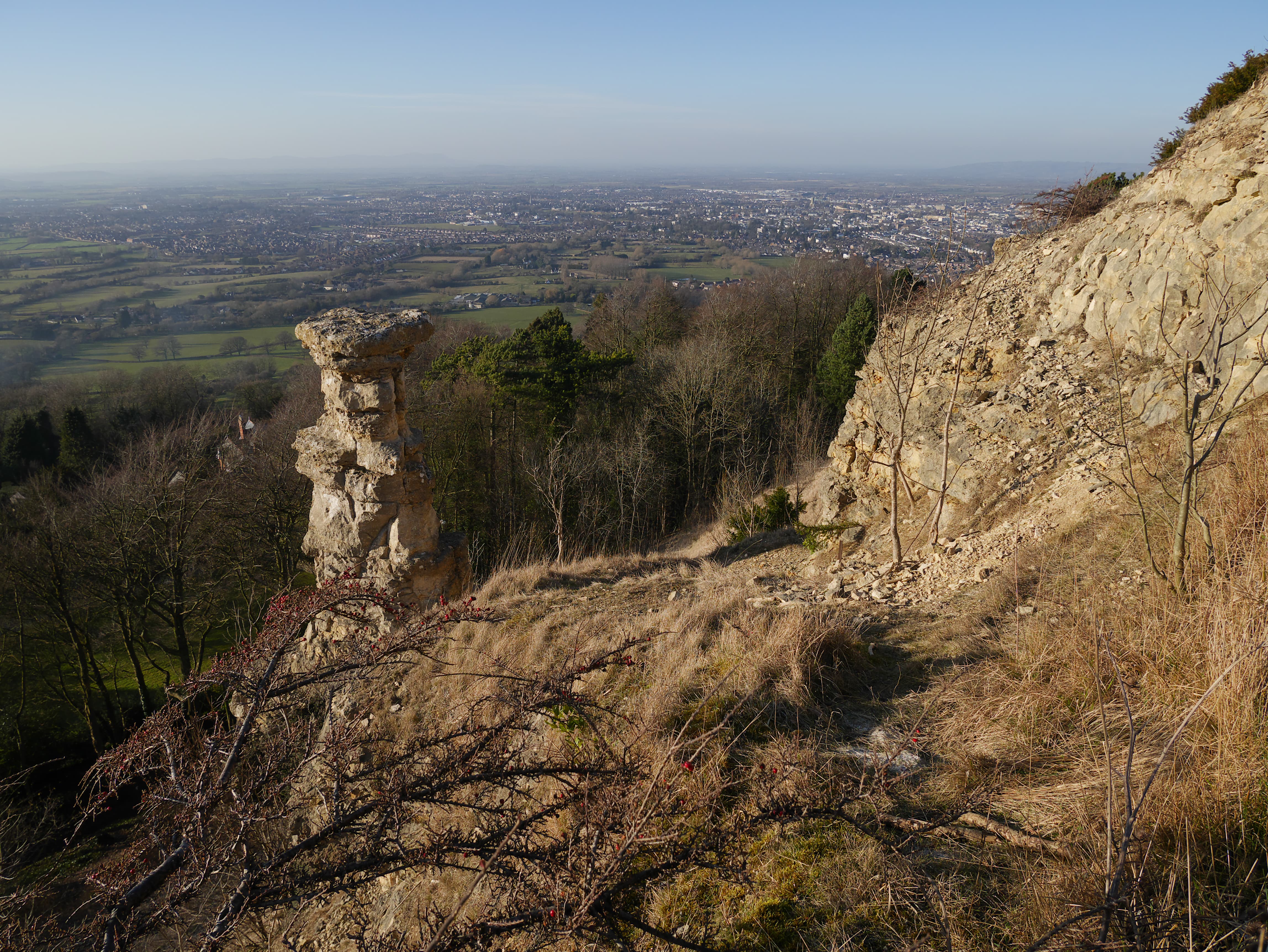Panasonic Lumix GF7 Review: Introduction
Panasonic Lumix GF7 at a glance:
- 16-million-pixel, Four Thirds sensor
- ISO 100-25,600 (extended)
- 1/16,000sec max shutter speed
- 3in, 1.04-million-dot touchscreen
- 7fps continuous shooting
- £430 with 12-32mm lens
Panasonic’s GF series is one of the longest-running compact system camera ranges. Yet while the original Lumix GF1 of 2009 is fondly remembered among enthusiasts as a cult classic, successive models were designed to appeal mainly to entry-level photographers, with simplified controls based around touchscreen operation. The 2013 Lumix GF6 veered back the other way a little, with the reintroduction of an exposure mode dial and more physical controls. However, the new Panasonic Lumix GF7, at first sight, has gone back to being a camera for casual photographers, including a currently fashionable emphasis on shooting selfies.
Based on this history, it’s not entirely clear that Panasonic is sure who the GF series is aimed at any more. But in this test we have a simple question to answer – is the GF7 any good, and if so, who might be interested in buying it?
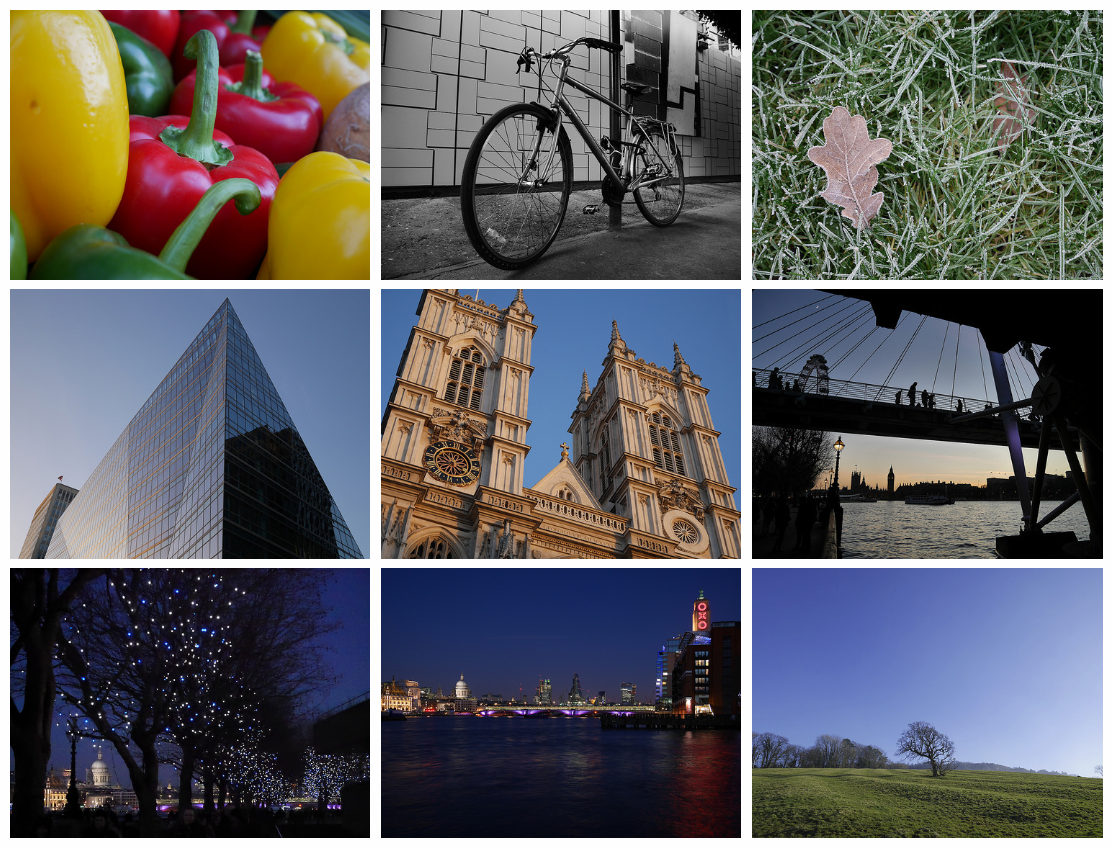
See our Panasonic Lumix GF7 review samples gallery
Panasonic Lumix GF7 Review – Features
Like other current Micro Four Thirds models, the GF7 is based around a 16-million-pixel, Four Thirds sensor. In this case the sensor is of Panasonic’s own design that is used in several other cameras, including the enthusiast-oriented GX7. It offers a standard sensitivity range of ISO 200-25,600, with an extended ISO 100 setting also available. The Micro Four Thirds lens mount allows use of a huge range of lenses from Olympus, Panasonic and third-party makes including Sigma, Samyang and Voigtlander.
Continuous shooting performance is very respectable, with a maximum shooting rate of 5.8 frames per second with fixed focus, and a seven-frame buffer for raw shooters (JPEG users can keep going until the card is full). With continuous focusing enabled, the rate drops slightly to 5 frames per second.
One notable feature is the hybrid electronic/mechanical shutter, which gives speeds up to an impressive 1/16,000sec. Not only is this useful for shooting with fast lenses in bright light, but it is also extremely quiet and discreet. It’s used when the camera is turned to its Silent mode, which also turns off the AF assist lamp and all operation sounds, and switches to electronic shutter for stealth shooting.
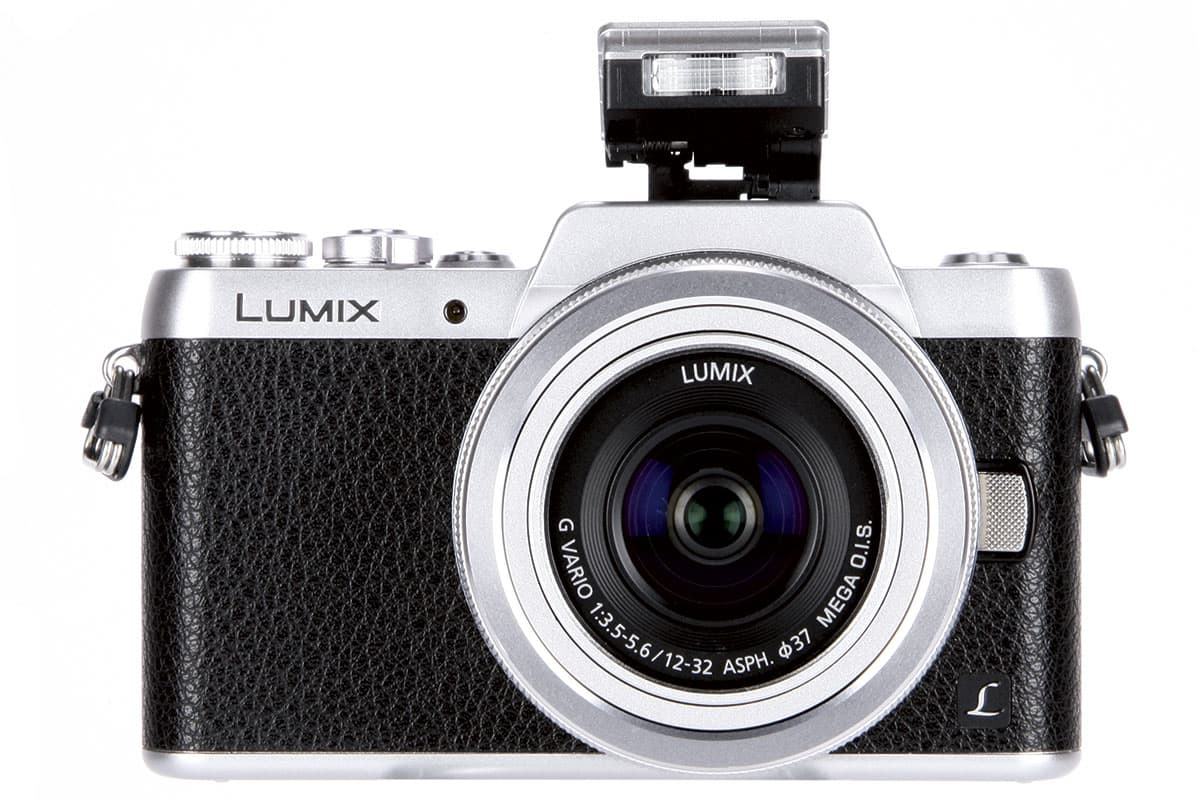
The small built-in flash pops up out of the bump on the top-plate
A tiny built-in flash pops up out of the ‘hump’ above the lens. Its guide number is just 5.6m @ ISO 200, so it’s really not very powerful at all. Naturally, Wi-Fi is built in for camera control and image sharing, although NFC-mediated setup has surprisingly been omitted.
Panasonic has packed in an array of image-processing ‘Creative filters’, including retro and several monochome modes. Raw files and unfiltered JPEGs can be saved alongside the processed files, which is always welcome. There’s a built-in invervalometer for time-lapse shooting and a stop-motion mode. A dual-axis electronic level helps avoid wonky horizons and converging verticals.
Movies can be recorded in Full HD at up to 50fps, with built-in stereo mics. Other features include a peaking display to assist manual focus, and zebra pattern to judge exposure in video. The GF7 has HDMI and USB ports for connection to a TV or computer.
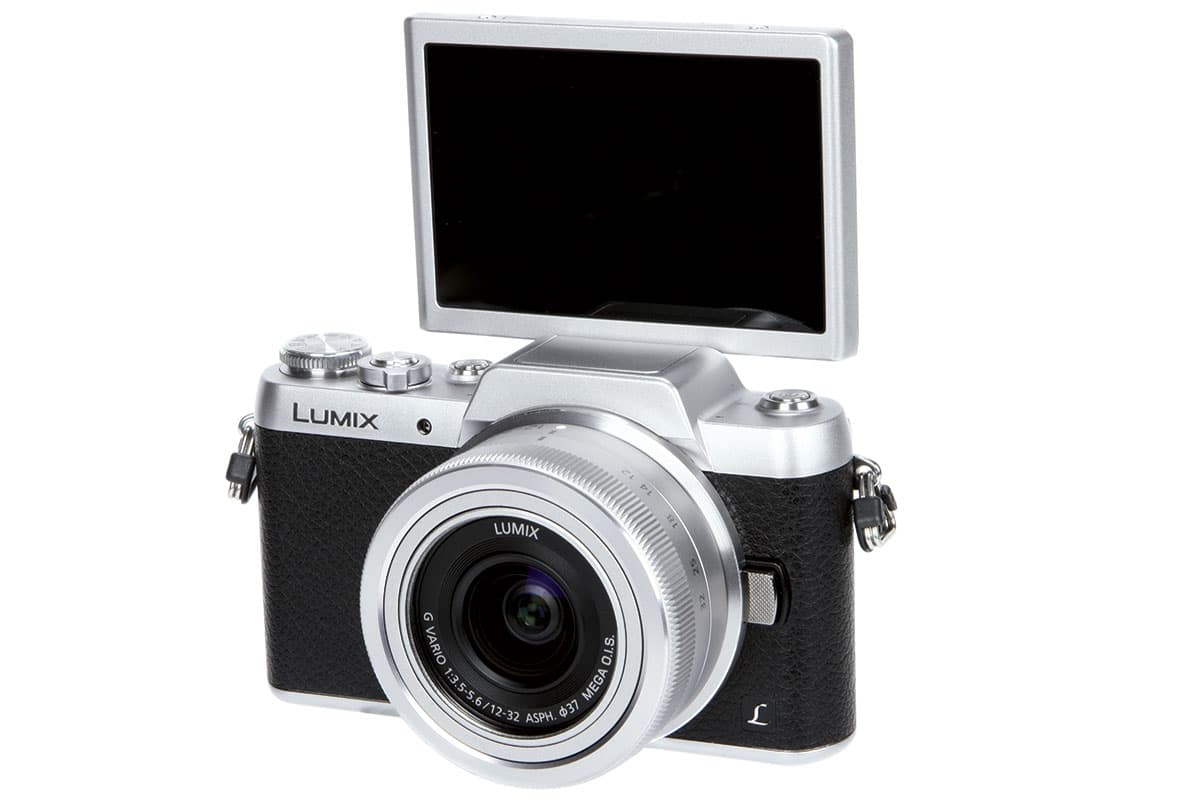
The screen hinges upwards and forwards, with good visibility over the top of the camera
This being 2015, though, Panasonic doesn’t want you to worry about these details. Instead, it’s really pushing the camera’s selfie-friendly credentials. The 3in touchscreen tilts upwards and forwards, activating an array of special features. Couples can trigger the shutter simply by bringing their faces close together, whereas singletons can do so by waving a hand in front of their face. There’s even a slimming mode, which stretches the image vertically to make faces appear thinner. Annoyingly for purist photographers, these all seem to work rather well.
Panasonic Lumix GF7 Review – Build and handling

The back of the camera has a conventional layout, with a combined d-pad/rear dial
With dimensions of just 106.5 x 64.6 x 33.3mm, the GF7 is a very small camera, and despite its tilting screen it is not that much bigger than the highly regarded GM1. The GF7 comes with a compact 12-32mm f/3.5-5.6 optically stabilised pancake zoom, which has a useful 24mm (equivalent) wideangle setting but a somewhat limiting 64mm-equivalent tele end. The ensemble weighs just 336g, so you can carry it around all day without noticing.
The GF7 has sufficient external controls for the main exposure settings, especially if you assign the top-plate Fn1 button to access ISO. The rear dial that’s used to change aperture, shutter speed and so on is rather small and fiddly, but that’s common on cameras this small. For those times when you just want to point and shoot, a quick tap of the top-plate iA button puts the camera into fully automatic mode.
The touchscreen interface gives access to almost any setting you might need, with five customisable on-screen touch buttons and a user-configurable quick menu, and thankfully Panasonic hasn’t felt the need to dumb it down at all relative to higher-end cameras. Larger, more enthusiast-focused models with extra buttons and dials are still quicker to operate, but the GF7 makes good use of its scanter resources.
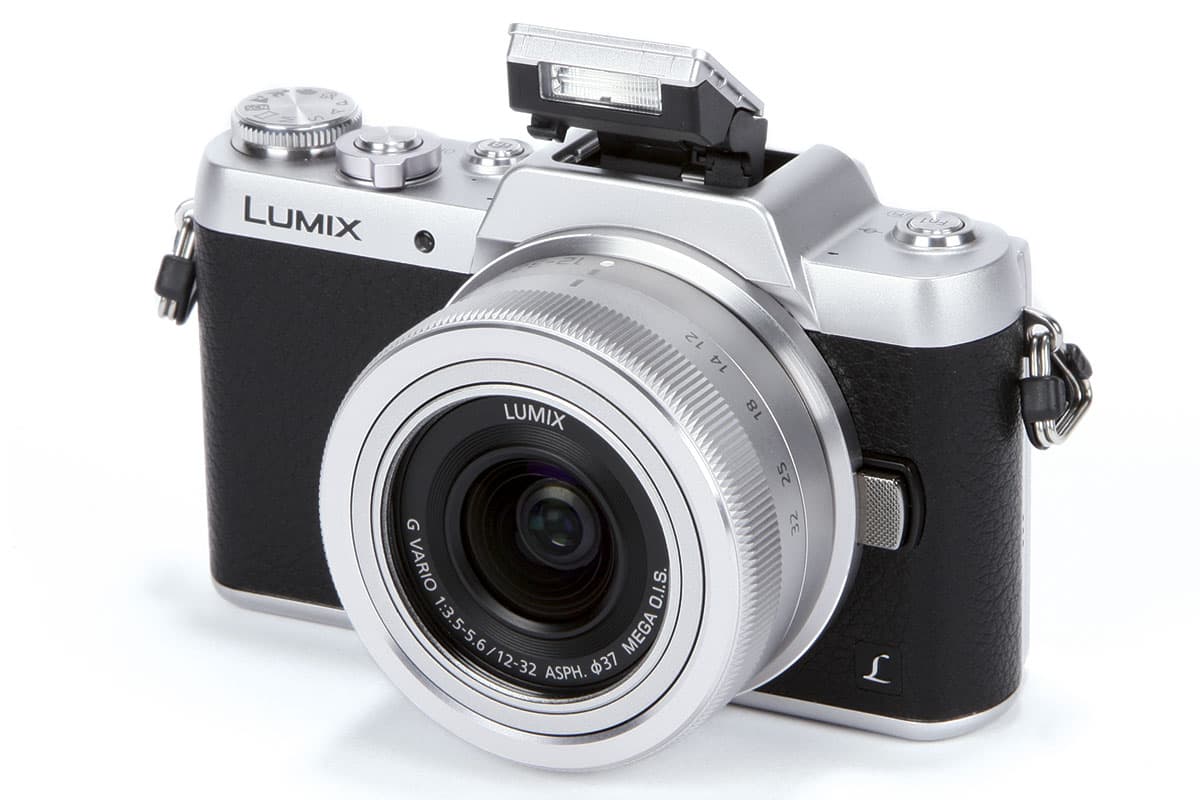 Panasonic has very much aimed for a retro design, with silver-coloured top and base plates and a choice of a black or rather handsome brown leatherette coating. The build quality isn’t bad, but it’s noticeably more plasticky than the solid-feeling GM1. Unfortunately, the rather clumsy-looking hump on the top-plate that houses the flash somewhat spoils the GF7’s looks, although it has the practical advantage of lifting the screen clear of the body so you can see it more clearly when it’s facing forwards.
Panasonic has very much aimed for a retro design, with silver-coloured top and base plates and a choice of a black or rather handsome brown leatherette coating. The build quality isn’t bad, but it’s noticeably more plasticky than the solid-feeling GM1. Unfortunately, the rather clumsy-looking hump on the top-plate that houses the flash somewhat spoils the GF7’s looks, although it has the practical advantage of lifting the screen clear of the body so you can see it more clearly when it’s facing forwards.
Panasonic Lumix GF7 Review – Performance
When shooting, the GF7 is impressively slick in operation. Autofocus is fast and accurate, even in low light, and the subject can be selected intuitively by tapping the touchscreen. The camera responds promptly to a press of the shutter button, and is remarkably quiet. Indeed, if you switch to the fully electronic shutter mode, it’s silent. Controls and menus are fast and responsive, which means that the GF7 doesn’t feel much like an entry-level camera at all.
The 1,728-zone metering is generally reliable and accurate, and I only felt the need to apply exposure compensation in extreme lighting conditions. The camera also previews exposure accurately in live view, which removes any guesswork from this process. Auto white balance usually works well, but can benefit from manual intervention in shady conditions.
Things start to go awry, though, when you switch to playback mode. The camera takes what feels like an eternity to bring up the first image, and when you zoom in to check focus the review image rapidly runs out of detail. It’s OK at 4x zoom, but at 8x everything looks like it’s simply not sharp. Luckily, any fears are allayed when you view your pictures on a computer – the 12-32mm kit zoom is remarkably good for such a tiny lens, delivering plenty of detail across the frame, although it’s a bit soft towards the edges and corners.

This image was shot at ISO 20000, and while it doesn’t stand up to close scrutiny, it’s fine when displayed or printed small
In fact, image quality is, overall, really rather good. Panasonic’s colour rendition may not have quite the same eye-candy appeal as Olympus’s, for example, but when viewed in isolation it’s far from unattractive. There’s plenty of detail at low sensitivities, and the camera’s JPEG processing holds up remarkably well at high ISOs. It does a good job of maintaining colour saturation, and while shadow detail tends to be obliterated, the noise reduction does a good job of retaining midtone detail and texture.
However, not everything works perfectly. For example, I found the panoramic mode to be distinctly pernickety and hit and miss, frequently admonishing me for moving the camera at the wrong speed or in the wrong direction. The camera also frequently got the stitching badly wrong, or showed banding from uneven exposure. A few of my attempts came out OK, but other brands do much better.
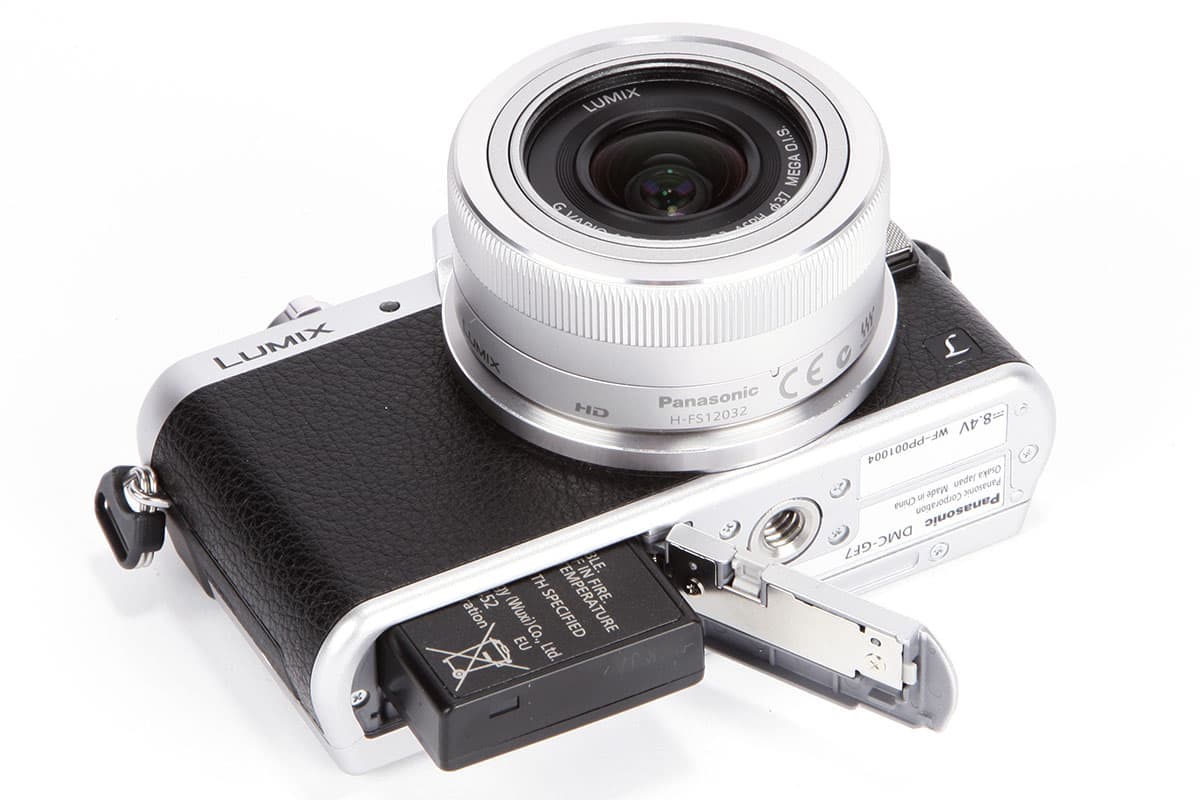
The DMW-BLH7E rechargeable Li- ion battery is good for 230 shots (by CIPA standard testing)
Battery life is about average for a small CSC – which means it’s not really very long at all. The DMW-BLH7E Li-ion pack is rated for 230 shots according to CIPA standard testing, and charges externally using the supplied charger.
Panasonic Lumix GF7 Review – Resolution
Using the supplied 12-32mm zoom at 25mm f/5.6, the GF7 resolves approximately 2800l/ph in our resolution tests, which is a reasonable result for a 16MP camera. It maintains this at the lower end of the sensitivity range, dropping to 2600l/ph at ISO 1600. At higher settings it falls more rapidly, to 2200l/ph at ISO 25,600.

Panasonic Lumix GF7 resolution, ISO 100
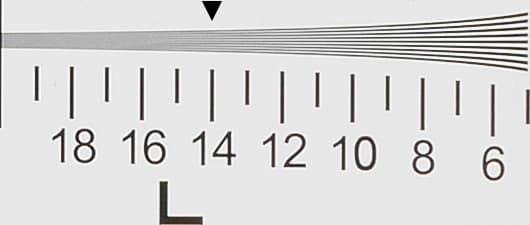
Panasonic Lumix GF7 resolution, ISO 200
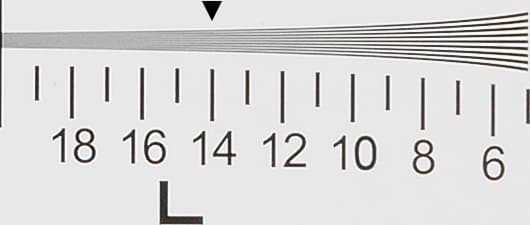
Panasonic Lumix GF7 resolution, ISO 400
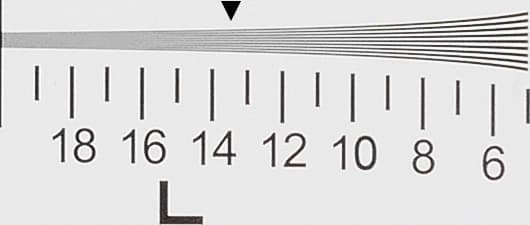
Panasonic Lumix GF7 resolution, ISO 800
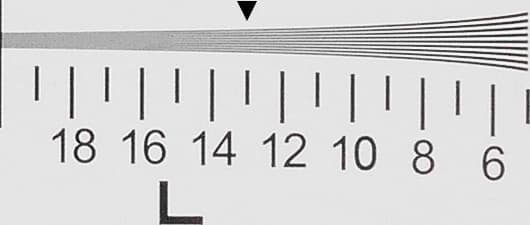
Panasonic Lumix GF7 resolution, ISO 1600
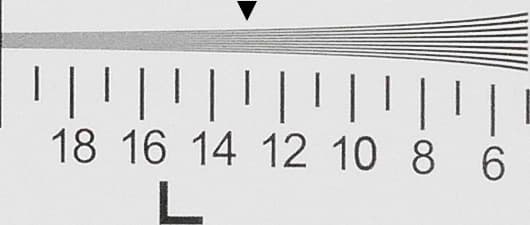
Panasonic Lumix GF7 resolution, ISO 3200
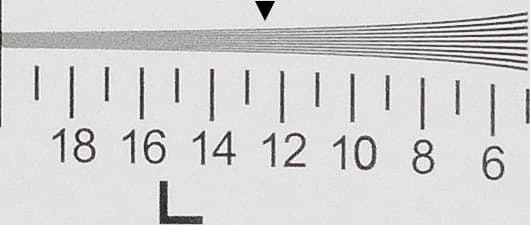
Panasonic Lumix GF7 resolution, ISO 6400
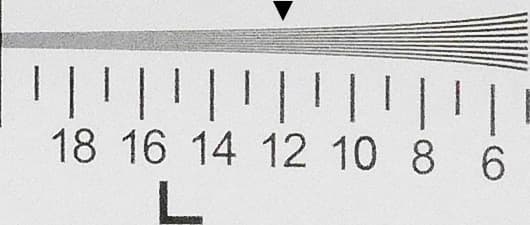
Panasonic Lumix GF7 resolution, ISO 12800
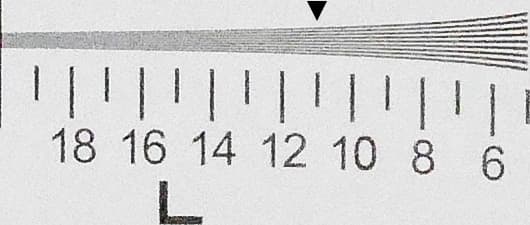
Panasonic Lumix GF7 resolution, ISO 25600
Panasonic Lumix GF7 Review – Dynamic range

With a peak dynamic range of 12.7EV in our Applied Imaging tests, the GF7 performs well for a Micro Four Thirds model. The range drops monotonously as the sensitivity is raised, indicating increasing noise. Beyond ISO 3200, the very low readings indicate little shadow detail will be recorded.
Panasonic Lumix GF7 Review – Noise
The GF7 gives nice clean images at ISO 100, with noise increasing visibly as soon as the sensitivity is raised. But the in-camera processing does a good job at higher settings, suppressing chroma noise without losing overall colour. Images get visibly very noisy at ISO 3200 and above, with increasingly muddy shadows, and the top two settings of ISO 12800 and ISO 25,600 are just barely acceptable.
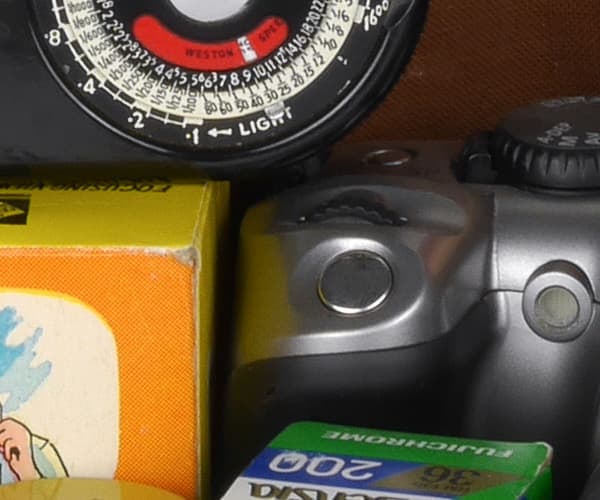
Panasonic Lumix GF7, ISO 100

Panasonic Lumix GF7, ISO 200

Panasonic Lumix GF7, ISO 400

Panasonic Lumix GF7, ISO 800
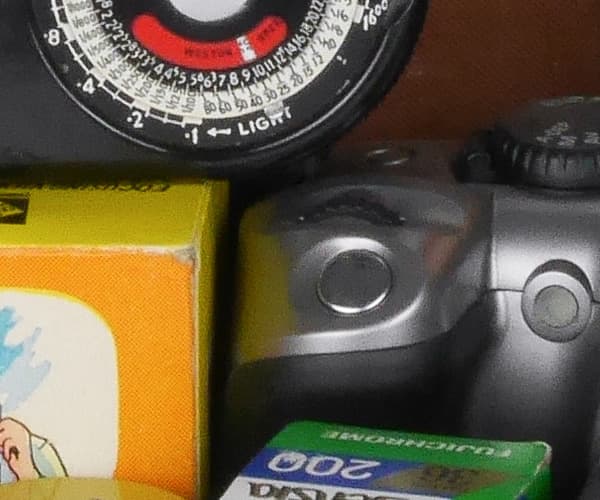
Panasonic Lumix GF7, ISO 1600
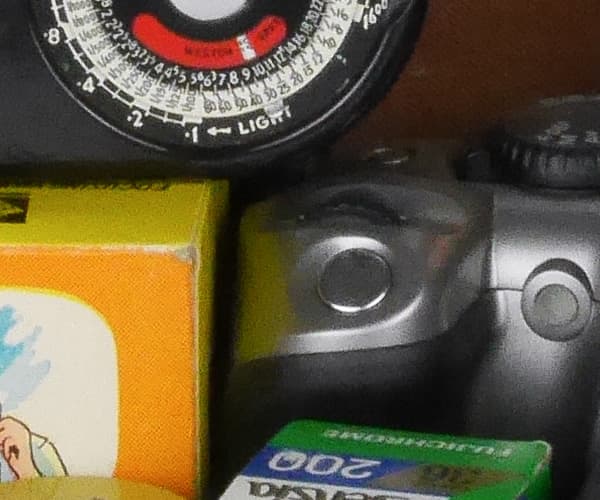
Panasonic Lumix GF7, ISO 3200
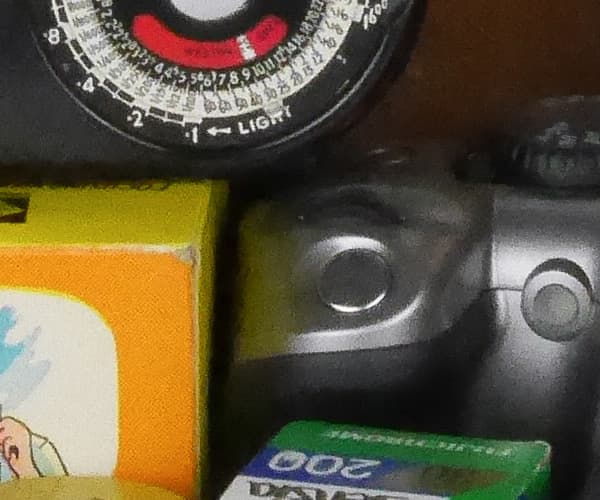
Panasonic Lumix GF7, ISO 6400
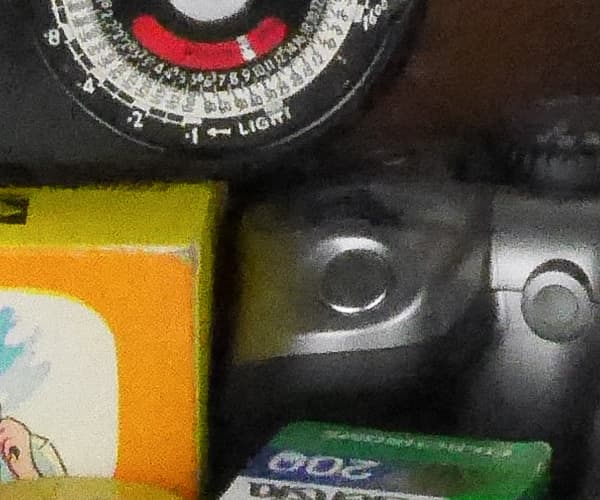
Panasonic Lumix GF7, ISO 12800
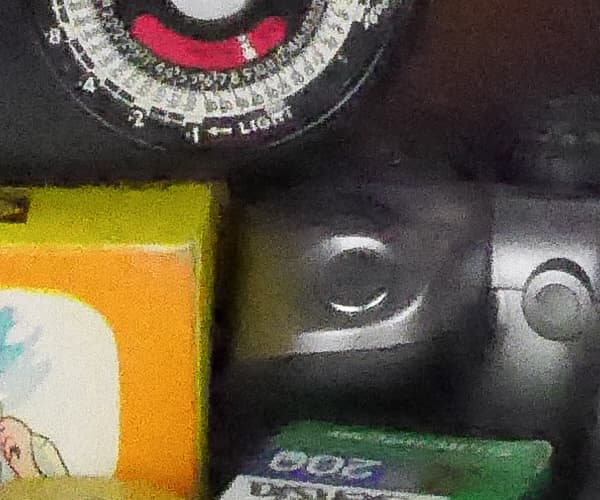
Panasonic Lumix GF7, ISO 25600
Panasonic Lumix GF7 Review – Verdict
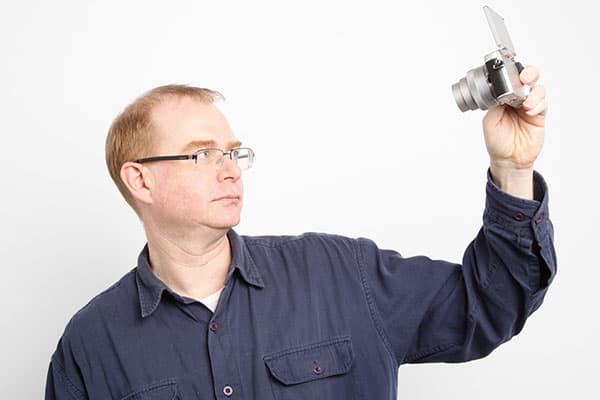
The GF7’s touchscreen tilts upwards and forwards for selfies
After spending some time with the GF7, I’m happy to report that it’s a very capable little camera. Indeed, I’d be tempted to conclude that, aside from build quality and its slightly cheesy looks, it’s a better camera than the highly regarded GM1. The flip-up screen is genuinely useful, and the slightly larger size means that the GF7 is more comfortable to hold.
The problem facing the GF7, though, is that it’s in a cut-throat class that’s packed full of very capable little cameras, but offers little to make itself stand out. In comparison, the Sony Alpha 5100 offers a larger sensor and an incredibly sophisticated autofocus system, the Olympus Pen E-PL7 includes in-body image stabilisation and arguably more attractive JPEG output, and the Fujifilm X-A2 has enthusiast-friendly twin-dial controls.
Don’t get me wrong, I rather like the GF7, but I’m just not sure that it brings enough to the table to make it a really compelling option for the casual photographers it’s designed for. Instead it may be more attractive to existing Micro Four Thirds users as a compact second body.



